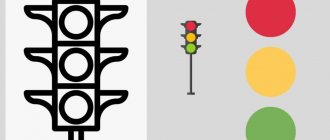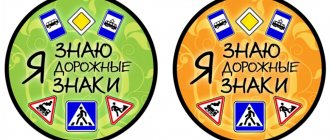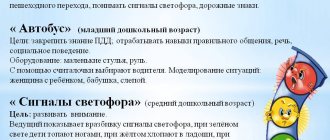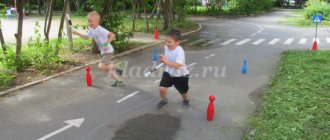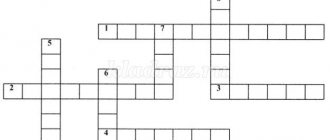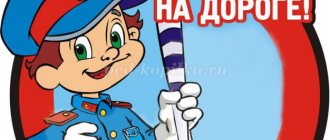Benefits of driving simulators
Among the undeniable advantages of using driving stimulants to study traffic rules are:
- saving personal time, since the practice takes place at home;
- motivation is not to violate traffic rules due to large fines. Thanks to a special system, programs can calculate fines;
- possibility of choosing an automatic or manual transmission;
- adaptation to certification, which gives confidence during the real exam;
- the virtual machine is controlled using a special steering wheel or keys located on the keyboard;
- solving a huge number of problems related to traffic conditions;
- realistic graphics;
- if an error is made, the simulator is pointed to the links of the traffic rules;
- variety of driving techniques;
- Driving practice in a small town or metropolis.
Outdoor games based on traffic rules for primary school age.card file
Outdoor games based on traffic rules for primary school age.
Outdoor games help schoolchildren to give knowledge of traffic rules in an entertaining way, to instill in them the skills and habits of correct behavior on the street, to arouse interest in the movement of vehicles and pedestrians, in the transport itself, respect for the work of vehicle drivers, and for the work of traffic police officers. In the process of games, children consolidate and improve their skills and abilities to act in constantly changing conditions and to best respond to an unexpected new situation. The game teaches the child, when interacting with peers in a team, to subordinate his interests to the interests of others.
Goals and Objectives: To consolidate students’ knowledge of traffic rules.
1.Consolidate knowledge of road signs and their purpose;
2. To develop the skill of a conscious attitude towards compliance with safe traffic rules;
3. Prepare children for the correct actions in the current situation on the road.
4.Expand children’s knowledge about the rules of behavior for pedestrians and drivers on the street. 5. Strengthen children’s understanding of traffic lights.
6. Teach children to distinguish road signs (warning, prohibiting, prescriptive, informational) intended for drivers and pedestrians.
Game "Bus"
“Buses” are teams of children “driver” and “passengers”. Flags are placed 6-7 m from each team. On the command “March!” The first players quickly walk (it is forbidden to run) to their flags, go around them and return to the columns, where they are joined by the second players, and together they again make the same path, etc. The players hold each other's elbows. When the bus (the front player - “driver”) returns to its place with a full complement of passengers, it must sound a whistle. The team that arrives at the final stop first wins.
Game "Traffic inspector and drivers"
The game involves 5-6 people. On the playing area, 4-5 parallel lines are drawn with chalk, indicating the stages of movement. Players (drivers) place their cars (chairs) behind the last line and sit on them. Drivers have driver's license coupons (cardboard rectangles). A traffic inspector sits on the opposite side of the platform, facing the drivers, with road signs and scissors in his hands. These scissors are needed to cut out the license of an offending driver. The traffic inspector shows road signs to drivers one by one. The driver, who has correctly explained what the sign requires, advances to the next line. The driver, who failed to explain this, receives a puncture (a corner of the driver's license is cut off with scissors) and a remark from the traffic inspector; his car remains in place. A player who receives four punctures is eliminated from the game. A driver who passes all stages without any comments becomes a traffic inspector or a traffic inspector-driver. The game repeats itself. Drivers who are eliminated from the game receive new driver's license coupons and are included in the game.
Game "Be careful!"
Children remember what to do and when to do it. They walk in a circle and carefully listen to the signals of the traffic controller. At the signal: “Traffic light!” - we stand still; at the signal: “Transition!” - we walk; at the signal: “Car!” - We hold the steering wheel in our hands.
Game "Funny Tram"
We are cheerful trams, We don’t jump like bunnies, We ride on the rails together. Hey, come sit with us, whoever needs it! The children are divided into two teams. One team - trams. The tram driver holds a hoop in his hands. The second team is passengers, they take their places at the bus stop. Each tram can carry only one passenger, who takes his place in the hoop. The final stop is on the opposite side of the hall.
Attraction game “Attention, pedestrian!”
To play this game, you need three batons, painted in the three colors of the traffic light. The traffic controller - a high school student - shows the children lined up in front of him alternately one of the three batons. Participants in the game take a step back when they see a red rod, stand when they see a yellow one, and take two steps forward when they see a green one. The winner is the one who never makes a mistake. The winner is awarded a badge, postcard, book, etc.
Game "Garage"
Contents: 5-8 large circles are drawn at the corners of the site - parking lots - garages. Inside each parking lot, draw 2-5 circles - cars (you can put hoops). The total number of cars should be 5-8 less than the number of players. Children walk in a circle, holding hands, to the sound of music. As soon as the music ends, everyone runs to the garages and takes a seat in any of the cars. Those left without a place are eliminated from the game.
Game "Trucks"
Contents: The players hold car steering wheels in their hands - these are trucks. They need to deliver urgent cargo. Each person has a small bag of sawdust or sand on their head. Who can run so fast as to overtake all their rivals and not drop the load - this bag?
Game "YES or NO"
The teacher or one of the children walks between the rows of desks and turns to one or another student with some question, for example: “Are you crossing the road at a red traffic light?”, “Are you riding a scooter in the yard?”, “They say that you don’t give up your seat to elders in public transport. This is true?" You must answer quickly, briefly, and be sure to include the words “yes” or “no.” When answering a question positively (“Yes, I only ride a scooter in the yard”), you must simultaneously turn your head from left to right, and when answering negatively (“No, I give way to older people in public transport”), you must shake your head from top to bottom (as, for example, accepted among the Bulgarians). Since these movements are completely unusual, many make mistakes and involuntarily accompany the answer with the wrong head movements, causing laughter and animation in those around them.
Game “Road, transport, pedestrian, passenger”
Children stand in a circle, and a traffic controller stands in the middle of it. He throws the ball to one of the players, while pronouncing one of the words: road, transport, pedestrian, passenger. If the driver said the word “Road!”, the one who caught the ball must quickly name a word associated with the road. For example: street, sidewalk, roadside, etc. To the word “Transport!” the player answers with the name of a vehicle; to the word “Pedestrian!” you can answer - traffic light, pedestrian, etc. The ball is then returned to the traffic controller. The wrong player is eliminated from the game.
Game "Road - non-road"
The playing field is drawn in a line, where each line is separated from the other by one step (you can play on a wide ladder), the players stand up and the driver throws the ball to them one by one, calling out different words. If a “road” word sounds, the player must catch the ball, “non-road” - miss or throw it away; if the player matches the named word, the player moves to the next line (to the next step). The one who crosses the last line first wins and becomes the driver.
Game "Hare"
A bunny is riding on a tram, A bunny is riding, he reasons: “If I bought a ticket, who am I: a hare or not?” (A. Shibaev) The “conductor” of the tram sells tickets to passengers who sit on chairs - seats on the tram. But there are one fewer chairs than passengers. As soon as all the tickets are sold and someone is left without a ticket, the conductor catches up with this “hare”, and the stowaway runs away.
Game “Remember the traffic controller’s signals”
Here at the post at any time there is a familiar guard. He controls everyone at once who is in front of him on the pavement. No one in the world can do this with one movement of the hand. Stop the flow of passersby and let trucks pass. Preparation. Children are divided into teams. In each of them a captain is chosen. The captains are located behind the starting lines - one opposite the other. The distance between teams is 20-30 m. In the middle of the site, between two lines that limit a strip 2-3 m wide, flags are laid out in a checkerboard pattern. Contents of the game. At a signal from the traffic controller (red light - arms extended to the sides or lowered - stop; yellow light - right hand with a baton in front of the chest - get ready; green light - traffic controller sideways to pedestrians, arms extended to the sides or lowered - go) players quickly run up At the flags, at the command of the traffic controller, the children return to their places and quickly form a line. Captains collect and count the flags brought by their players. One point is awarded for each flag. The team with the most points wins. Rules of the game: During a run, a player is allowed to collect any number of flags lying on the ground. It is prohibited to take flags from each other. You cannot step beyond the lines limiting the space for flags. Team captains play on equal terms with everyone .
Game "Knowledgeable Pedestrian"
There are a lot of traffic rules in the world, It wouldn’t hurt us to learn them all, But the main rule of traffic is to know how to do the multiplication tables: On the pavement - don’t play, don’t ride, If you want to stay healthy! The game is held on the playground in the form of an excursion with an element competitions. Children line up in teams. They must walk the path, for example, from school to library. Approaching an intersection or pedestrian path, children must stop and complete a practical task posed in connection with approaching traffic and an active traffic light, then ask: “Street, street, can we cross the road?” To which the street replies: “It’s possible if you tell me answer one question." Asks one question about traffic rules. And so at each intersection. The detachment that answers all the questions correctly will arrive earlier at the designated point, where it will be awarded the “Excellent Pedestrians” pennant.
Game "Walking along the path"
Players walk along the path, naming at each step, for example, the names of road signs, etc. The one who takes the most steps and names the most words wins.
The game “Whoever is named, catches it.”
The players sit in a circle. In the center is a traffic controller (driver). He calls the name of one of those standing in a circle and throws the ball to him. The person named catches the ball, names some type of transport and throws the ball to the traffic controller. The one who did not catch the ball or did not say the word becomes the driver. The winner is the one who has never been a traffic controller.
Game "Catch - don't catch"
Participants in the game, 6-8 people, line up half a step from each other. The leader is 4-5 steps away from the players with the ball, while pronouncing words, for example, “road”, “crossing”, “road sign”, etc. (in this case the ball must be caught), or words denoting any other objects (in this case the ball should not be caught). The one who makes a mistake takes a step forward, but continues to play. If the mistake is made again, he is eliminated from the game. It is very important that the driver first says the word and then throws the ball.
Game "Name the Sixth"
Several people play. The driver turns to someone to whom he throws the ball into his hands: “Name the sixth” - and lists, for example, five types of transport (or road signs, etc.). The one who is asked to continue the list must catch the ball and quickly add another name, without repeating what was listed before. If the words follow immediately, the person answering begins to ask questions; if not, the driver remains the same.
Game "Find the Rod"
Before the game starts, the teacher hides the traffic control rod in plain sight. The players stand in a line or column, one at a time. At the teacher’s signal, the players move in a column, one at a time, around the hall, and everyone tries to be the first to notice the hidden object. The player who sees the object first puts his hands on his belt and continues walking, without showing others where the hidden object is. The teacher, to make sure that the player really found the item, can approach him and quietly ask. The game ends when all or most of the players have found the item. The player, having noticed the hidden item, must not stop, slow down, touch or in any other way indicate to other players the location of the hidden item.
Game "Find a Pair"
The players are given strips of paper with images of road signs. Without talking, everyone must find a mate, that is, a partner with the same picture. Pairs stand in a circle. Complications: each pair tells what their road sign means.
Game "Unusual Road Sign"
In this game, children are asked to come up with an unusual road sign. You need to choose one of the objects from the surrounding world and try to transfer its properties to a road sign. At the same time, the most fantastic, most incredible options are possible. The teacher invites the children to think of some object of living or inanimate nature (cat, tree, flower, house, etc.). The teacher asks: “Could an unusual road sign somehow resemble a cat?” The children answer: “Maybe!”
Game "Traffic Lights"
The traffic light is red! The path is dangerous - there is no passage! And if the yellow light is on, he says “get ready.” Green flashed ahead - the path is clear - cross. In the game, all children are “pedestrians”. When the traffic controller shows a yellow light at the traffic light, all participants line up and prepare to move; when the green light turns on, you can walk, run, jump throughout the hall; when the light is red, everyone freezes in place. The one who makes a mistake is eliminated from the game. When crossing the street, follow the traffic lights.
Game "Spiderweb"
Children sit in a circle. The driver, a traffic controller, has a ball of thread in his hands. He throws a ball to any of the children, naming the cause of accidents on the roads: “Sasha, walking along the roadway when there is a sidewalk is dangerous.” Sasha holds the thread and throws the ball further. "Sergey! An unexpected exit from behind a stationary car can lead to an accident,” Sergei holds the thread and throws the ball further: “Olya! Children playing on the roadway is very dangerous.” When all the children take part in the game, they will have a “cobweb” in their hands and a long story about the causes of accidents on the roads.
Game "Trip to Sochi"
To play, you need chairs - one less than the number of players. The chairs are placed tightly in a circle, one next to the other, with the seats facing outward. Each player takes an empty seat. The driver does not have a chair. He walks around the players, holding a flag in his hand, and says: “I’m going to Sochi, I invite those who want to.” All the guys one by one join him. The driver says: “We are going to Sochi by bus (train, plane),” and at the same time speeds up his pace. “The bus is picking up speed,” the driver continues and starts running. “Sochi is very close,” he announces (the run slows down). "Attention, stop!" — the driver’s command is suddenly heard. At this command, everyone runs to the chairs. Everyone tries to occupy any free space. The driver also tries to take a seat. The one who is left without a chair becomes the driver, gets a flag and repeats the game. The driver can take students away from the chairs, lead them across the hall, etc. and give the command “Landing!” unexpectedly anywhere.
Game "Crossroads"
The leader stands in the center of the intersection - this is a traffic light. Children are divided into two groups - pedestrians and cars. The presenter's whistle sounds. The intersection comes to life: pedestrians walk, vehicles move. If violations of traffic rules are committed, the presenter whistles and calls the name of the violator. He leaves the game. Those who make no mistakes win. A motor rally on tricycles and scooters is organized for the winners.
Game "Search for the Wand"
Two chairs are placed at a distance of 8-10 m from one another and a staff is placed on each. The players stand near the chairs, facing each other. They are blindfolded. At the leader’s signal, each of them must go forward, go around his friend’s chair and, returning back, find his baton and knock it on the chair. The one who completes this first wins.
Game "Different Cars"
The leading traffic controller exclaims: “Trucks!” - and the trucks quickly drive towards their line. And passenger cars follow them, trying to make them look bad. The presenter remembers (or somehow notes) the number of those covered. It’s the turn of the passenger cars to go to their road. And among them there will be losers who were overtaken by trucks. And so on several times. The presenter does not necessarily call the commands strictly in order - it will be more interesting if he unexpectedly calls one several times in a row. It is only important that the total number of trips for trucks and cars ends up being the same. To create more tension in the game, team names should be pronounced syllable by syllable. Here it sounds: “Ma-shi-ny easy...”
Game "Traffic Controller"
While walking in a column one at a time, the teacher (he goes first) changes the position of his hands: to the side, on the waist, up, behind the head, behind the back. Children perform all the movements behind him, except for one - hands on the belt. This movement is prohibited. The one who makes a mistake leaves the ranks, stands at the end of the column and continues the game. After some time, another movement is declared prohibited. Physical education minute The guard stands stubbornly (we walk in place) He waves to people: Don’t walk! (moves your arms to the sides, up, to the sides, down) Here the cars drive straight (hands in front of you) Pedestrian, just wait! (arms to the sides) Look: he smiled (hands on his belt) Invites us to walk (we walk in place) You cars, don’t rush (claps hands) Let pedestrians pass! (jumping in place)
Game “Assemble a traffic light”
The teams are given a baton and the task is explained: each team member must participate in assembling a traffic light from rectangles. The winner is the team that finishes assembling the traffic light earlier and without errors. Two boxes contain seven gray rectangles and one colored rectangle: red, yellow, green. At a signal, team members run up to the boxes, take out rectangles from the boxes, return to their place, passing the baton to the next one, each next participant takes another rectangle from the box, continuing to assemble the traffic light. The rectangles are placed one on top of the other in the following sequence: gray, gray, red, gray, yellow, gray, green, gray, gray, gray.
Game "Traffic Light"
The field is limited on 4 sides (depending on the number of players), like a pedestrian path, beyond which you cannot run. The driver in the center of the playing field, turning away, assigns a color, those players who have this color on their clothes calmly cross, the rest - “violators” - must run across the “road”, the grumpy “violator” becomes the driver.
Game "Traffic Signals"
Two teams of 12-15 people line up in a semicircle, one to the left, the other to the right of the leader. In the teacher’s hands there are two cardboard circles, one side of which is yellow, the other side of the circles is different (red and green). The teacher reminds the children how important it is to follow the traffic rules on the street, to cross it only in designated places where there is a sign “pedestrian”, first look to the left, then to the right to make sure that there are no cars nearby, and where there is a traffic light, carefully monitor it. He reads S. Mikhalkov's poems to the children. The guys suggest the missing words in unison. If the light turns red, It means moving... (dangerous). The green light says: “Pass on, the way...” (open). Yellow light - warning - Wait for the signal to ... (move). Then the teacher explains the rules of the game: - When I show a green traffic light, everyone marches in place (you need to start with the left foot), when yellow - they clap their hands, and when red - stand motionless. Anyone who confuses the signal takes a step back. Signals should change unexpectedly, at different intervals. The team that has the most participants left at the end of the game wins.
Game "Let's get a driver's license"
The game involves 5-7 people: a traffic inspector and drivers. The players choose a driver (traffic inspector). He is given a road sign (from the "Wall Road Signs" set), with its meaning written on the back of the sign. The traffic inspector shows road signs (familiar to the students), changing them one by one, and the drivers explain the meaning of the signs. For the correct answer they receive a point (they are given a colored token, a piece of cardboard). At the end of the game, it is calculated which of the drivers received the most tokens. He is awarded the title of 1st class driver, the others, respectively, 2nd and 3rd class drivers. The player in first place becomes a traffic inspector. The game is repeated.
Game "Collect the picture"
From each team (“Traffic Light”, “Car”, “Pedestrian”, etc.), a player is selected to participate in the game using a counting rhyme. You need to collect the parts of the picture scattered on the road to get a picture with the same image as the name of the team.
Taxi game
A group of children is divided into pairs. Each pair (“Taxi”) stands inside a hoop (“Taxi”). Each child holds their half of the circle (usually at waist or shoulder level). Children run around standing inside the hoops while music plays. The two children must move at the same speed and in the same direction. Every time the music stops, the children from the two hoops join together. The game continues until the maximum number of children fit inside the hoops (up to 6-8 people).
Game "Move slower..."
The driver stands on one side of the playing field, the players are at the other end, the driver turns away and says: “If you drive more quietly, you will go further, one, two, three, stop” and turns around, the players who are running towards the driver at this moment must freeze, the one who did not manage to stop in time returns to the starting line. The winner who is the first to reach the driver's territory becomes the driver himself. The whole point of interest lies in the fact that the phrase can be cut off in any way (an element of surprise is introduced), but the last word should still be “stop”, only after which the driver can turn around.
Car relay game
Children are divided into 2-4 equal teams and line up in columns one at a time, one parallel to the other. Those playing in teams take the names of the cars: “Moskvich”, “Zaporozhets”, “Zhiguli”, etc. A starting line is drawn in front of the players in front. A stand (mace) is placed in front of each column at a distance of approximately 10-20 m. The finish line is drawn at a distance of 2 m from the start. The traffic controller loudly calls any car. Players carrying a card with the name of this car run forward, run around the object standing in front of them and come back. The first one to reach his team wins a point for his team. The traffic controller calls cars randomly, some of them can be called twice. Outdoor games according to the Rules of the Road
Game "Colored Cars"
Children are placed along the wall of the room or along the edge of the playground. They are cars. Each of the players is given a flag of any color (optional) or a colored circle or ring. The teacher stands facing the players in the center of the room (playground). He holds three colored flags in his hand. The teacher raises a flag of some color. All children who have a flag of this color run along the intended road, observing the Rules of the Road, and they honk their horn as they go, imitating a car. When the teacher lowers the flag, the children stop and each go to their own garage. The teacher then raises a flag of a different color and the game resumes. The teacher can raise one, two or all three flags together, and then all the cars leave their garages. If the children do not see that the flag is lowered, the teacher supplements the visual signal with a verbal one: “The cars (name the color) have stopped.” The teacher can replace the color signal with a verbal one (for example: “Blue cars are leaving”, “Blue cars are returning home”).
Game "Fastest"
Everyone draws a circle for themselves (with green, yellow, red crayons) and stands in it. The presenter stands in the middle of the platform. At his command “One, two, three - run!” the children run away. The presenter says: “One, two, three - run into the traffic light!” and he himself tries to occupy some circle. Those who do not have time to occupy the circle become the leader.
Game "Labyrinth"
This game is played when children are already familiar with the designations of individual signs and signs (“Entry prohibited”, “Pedestrian crossing”, “Cycling is prohibited”, etc.). In winter, a labyrinth is built with snow banks located at a distance of 1 m from each other 0.5-0.7 m high. In summer, the labyrinth can be made from sand and bricks, reducing the height of the walls. Signs are installed in the labyrinth. In winter, on sleds, in summer, on bicycles and scooters, children travel through the maze, strictly following the instructions of the signs. Those who do not break the rules receive a gift.
Game "Visiting Aibolit"
To participate in this game, you can invite schoolchildren, traffic police officers, who can be assigned the roles of traffic controllers and Doctor Aibolit. Intersections and pedestrian crossings are marked with chalk on the floor (or asphalt), and one or two traffic controllers are posted. It is desirable that the road goes around the ring and is longer. Children wear a variety of animal hats. Doctor Aibolit (educator) takes his place at the end of the path and waits for the animals to be treated. Children, two by two, begin to move to the doctor on bicycles or, if they are not available, on foot. Regulators note who violated the rules of crossing and stopping. When all the “animals” arrive at Aibolit, the analysis of violations begins. Regulators take turns calling violators. Doctor Aibolit announces that such and such an animal was hit by a car, which crushed its paw or head. These animals go to Aibolit for treatment. Those who have completed the entire journey correctly receive a gift from Aibolit. (As a gift, you can use small toys, sweets, and the best works of children in visual arts.)
Game "Traffic Light", version II
On the floor or area of the kindergarten, intersections and transitions are marked with chalk. In the center stands a boy (“traffic light”) with red circles on his back and chest and green circles on his shoulders. He holds two yellow circles in his hands. Children begin to cross the street at pedestrian crossings, and the “traffic light” turns to them either sideways or with its back, respectively allowing or prohibiting the crossing. The kids need to know what the yellow light means. If the “traffic light” raised its hands with yellow circles, it means you can’t cross yet, you just need to get ready, and those who didn’t have time to cross the street must linger in the middle of the street and wait for the green signal. The same game can be played by replacing the traffic light with a traffic controller. Violators in this game are subject to a fine: they explain their mistakes.
Game "Crossroads"
Cords are laid out on the floor, crossing each other at right angles. An adult stands at one end of the cord with traffic signals. Children approach the intersection to the music and follow the teacher’s signals: when it’s red, they stop, when it’s yellow, they march in place, when it’s green, they go right, left, or forward.
Game "Running traffic light"
Children follow the leader in all directions. From time to time the presenter raises the flag, then turns around. If you raise the green flag, the children continue to move behind the leader; if the flag is yellow, they jump in place; if the flag is red, everyone must freeze in place and not move for 15-20 seconds. Whoever makes a mistake leaves the game. The most attentive one wins.
Game “To Your Signs”
Six people (assistants) stand at random on the site, each holding a road sign: “Children”, “Pedestrian crossing”, “Railway crossing with barrier”, “Road work”, “Wild animals”, “Underpass”. Children divide into groups, join hands, forming a circle. Helpers enter the middle of each circle, show a road sign, and explain its meaning. Then the leader (teacher) approaches each circle and invites the playing children to follow him. Children follow the leader and repeat all his movements. While the children follow the leader, the helpers lower their signs and move around the playground, that is, change their places. At the leader’s signal (whistle), all players must quickly find their sign and stand in their circle, holding hands, the helpers in the middle of the circle holding signs above their heads. Those who find their sign first win. The game is played 2-3 times. The leader, inviting the children to follow him, tries to divert the players’ attention from the assistants, showing them various movements (walking on heels, jumping, turning around, squatting, etc.).
Game "Traffic Light and Speed"
Two tables. Two traffic light layouts. At the command of the presenter, the first numbers run to the traffic lights and dismantle them, the second ones assemble them. Still others take it apart again, etc. The team that finishes the task first wins.
Game "Let's Draw the Road"
Draw a road on the ground. Children jump over it. We gradually increase the width of the road. The winner is the one who jumps over the road at the widest point.
Game "To your flags"
The players are divided into three groups. Each group stands in a circle, in the center of which there is a player with a colored (red, yellow, green) flag. At the first signal from the teacher (clap your hands), everyone except the players with flags scatter around the court. At the second signal, the children stop, squat down and close their eyes, and the players with flags move to other places. At the teacher’s command “To your flags!” children open their eyes and run to the flags of their color, trying to be the first to line up in a circle. Those who are the first to line up in an even circle and stand holding hands win.
Game "Skillful Pedestrian"
At a distance of 60 cm, two cords about 5 m long are placed parallel to each other. You must walk blindfolded between them along the path. Option 2. Two circles are made from two cords: an outer one and an inner one. The distance between them is 1 meter. You need to blindfolded and walk in a circle between the cords.
Game "Ball in the Basket"
3 baskets are placed 2-3 steps from the players: red, yellow, green. At the leader’s command, you need to throw a red ball into a red basket, a yellow ball into a yellow basket, and a green ball into a green basket. The presenter can name the same color several times in a row or name green after red, etc.
What does the simulator teach?
These games will help new or inexperienced drivers learn a lot of new things. This is only possible when a person treats the process as learning, and not just entertainment. The main goals of the driving simulator:
- getting rid of fears;
- traffic rules training - they are considered the best option for gaining theoretical knowledge;
- acquiring driving skills - even a driver with considerable experience will be able to improve his skills. The programs have different levels of complexity; there is the possibility of mastering extreme driving skills.
